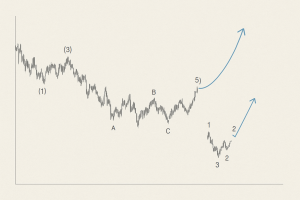Introduction
Day trading can be a rewarding yet challenging endeavor for beginners. While it offers the opportunity to profit from small price movements in stocks or currencies, it also carries significant risks. Whether you’re new to trading or looking to sharpen your skills, understanding the fundamentals is crucial for success. Below, we’ll walk you through ten essential tips for starting your day trading journey, focusing on risk management, strategy development, and effective trading practices.
1. Educate Yourself First
Before diving into day trading, it’s vital to build a strong foundation of knowledge. You should understand market mechanics, including how orders are executed, and what influences price movements. Reading books, following reputable trading blogs, and enrolling in online courses can give you the basic know-how required for trading. Additionally, familiarize yourself with the financial instruments you’re planning to trade, be it stocks, forex, or cryptocurrencies.
Key Takeaway: Take the time to educate yourself on day trading fundamentals before you start. Knowledge is your best tool for success.
2. Start Small
For beginners, starting with a smaller capital investment is key. Begin with a trading account balance that you’re willing to risk without severe financial consequences. Consider this initial amount as a tuition fee for the lessons you’ll inevitably learn while trading. Once you gain confidence and experience, you can gradually increase your investment.
Key Takeaway: Start with a small capital investment to mitigate potential losses while learning.
3. Develop A Trading Plan
Successful day traders always follow a trading plan. This plan should include specific entry and exit points, risk tolerance, and profit goals for each trade. By sticking to a plan, you reduce emotional decision-making, which can lead to costly mistakes. Your plan should be adaptable but consistent enough to guide your trading strategy.
Key Takeaway: A structured trading plan ensures disciplined, emotion-free trading.
4. Master Risk Management
Managing risk is perhaps the most critical aspect of day trading. Using stop-loss orders and limiting the amount of capital you risk on each trade can protect you from significant losses. Many traders recommend not risking more than 1-2% of your trading capital on any single trade. This allows you to survive a losing streak without wiping out your account.
Key Takeaway: Always have a risk management strategy to protect your capital from large losses.
5. Stay Disciplined
Discipline is key to long-term success in day trading. Emotional trading—triggered by greed or fear—often leads to impulsive decisions and can result in heavy losses. Stick to your trading plan, avoid overtrading, and don’t chase profits after a series of losses.
Key Takeaway: Stay disciplined and stick to your trading plan to avoid emotional mistakes.
6. Utilize Technology
There are many tools and platforms available today that can give you an edge in day trading. These include charting platforms that offer real-time analysis, algorithmic trading systems, and news feeds that provide market updates. MetaTrader 4 and 5, for instance, are popular platforms offering tools for technical analysis and backtesting strategies. These technologies help in faster decision-making and executing trades at the best possible prices.
Key Takeaway: Use technology to your advantage for quicker analysis and better trade execution.
7. Start With A Demo Account
Most brokers offer demo accounts where you can trade in real market conditions without risking real money. This allows you to practice your strategies, become familiar with the trading platform, and understand how price movements and market volatility can impact your trades. Use the demo account to simulate real-world trading until you’re comfortable with your strategy.
Key Takeaway: Practice with a demo account before risking your actual capital in live trading.
8. Control Your Emotions
Emotional stability is vital in day trading. Markets can be volatile, and it’s easy to get swept up in the excitement of rapid price movements. Overconfidence after a few wins or panic after a few losses can lead to impulsive decisions. Learning to keep your emotions in check helps maintain a clear and objective approach to each trade.
Key Takeaway: Keep emotions in check to avoid impulsive trading decisions.
9. Keep Learning And Adapting
Day trading is a continuous learning process. Even experienced traders constantly refine their strategies based on market changes, new financial products, and technological advancements. Keep up-to-date with the latest news, market trends, and trading strategies. Join forums or communities of traders to exchange tips and insights.
Key Takeaway: Always stay updated and adapt to the evolving market conditions to maintain an edge.
10. Keep A Trading Journal
Maintaining a trading journal is a great way to learn from both your successes and failures. Record each trade, including the rationale behind it, entry and exit points, and the outcome. Over time, reviewing your journal will highlight what works and what doesn’t, helping you fine-tune your strategy.
Key Takeaway: A trading journal helps you reflect on your trades and improves your strategy over time.
Conclusion
Day trading offers exciting opportunities, but it requires a disciplined approach, continuous learning, and a solid risk management strategy. By starting small, using technology to your advantage, and staying disciplined, beginners can navigate the complexities of the market and gradually build their trading skills. Remember, consistent profitability comes with time, patience, and a commitment to improvement.



